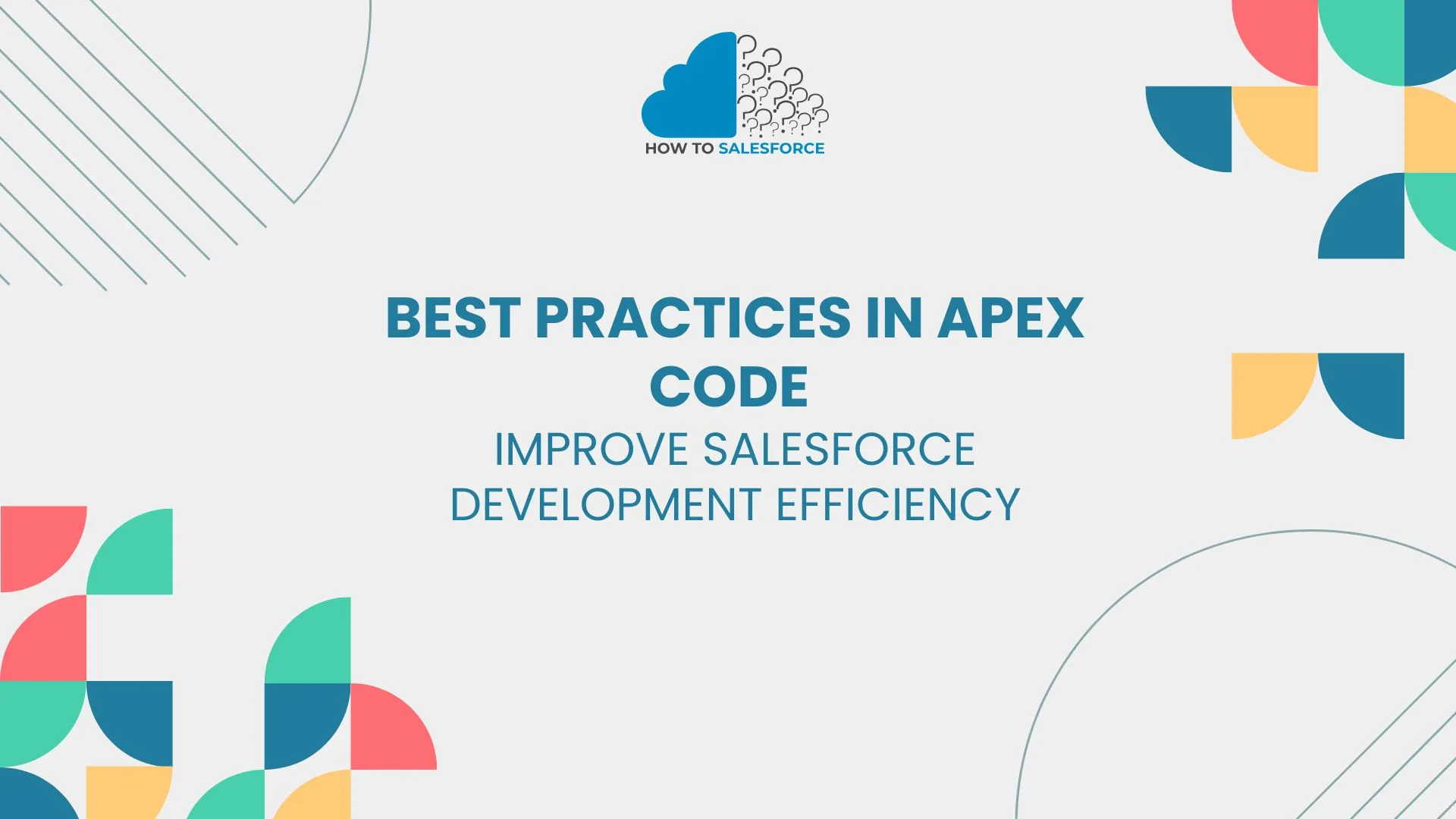Apex is a robust programming language for Salesforce that lets developers create scalable apps for the Salesforce platform. However, following best practices is necessary for using Apex efficiently. To guarantee the highest possible efficiency, maintainability, and scalability in Apex code development, we will look at several essential pointers and best practices in this piece.
To read more, there is another blog: Salesforce Business Analyst
Recognize the Apex Code System
Firstly, comprehend the Apex code’s structure. Cloud-based object-oriented programming language Apex is used. Standard concepts, like modularity and unambiguous variable definitions, must be adhered to by every developer. It is easier for other developers to maintain code that is written clearly and concisely.
Make use of bulk processing.
Secondly, bulk processing is one of the most crucial best practices in Apex code. The amount of records that may be processed in a single transaction is limited by Salesforce governor constraints, which can be avoided with the use of this method. Always write programs that can efficiently handle massive data collections.
- – To handle records in bulk, use “for” loops.
- – Steer clear of using several SOQL searches inside of loops.
- – To handle big volumes of records, use collections like Lists and Sets
Optimize SOQL Inquiries
Furthermore, optimizing your SOQL queries ensures Apex code performance. To speed up your searches, always restrict the fields that are retrieved and consider using indexed fields. Fewer SOQL queries must be performed to avoid reaching governor limits.
- – Use WHERE clauses to filter queries at all times.
- – Obtain the required fields.
- – Rather than using several queries, use effective joins.
Use Trigger Design Best Practices
Next, using Apex code development best practices in trigger design guarantees that your triggers operate well and don’t interfere with one another. Maintain a single trigger per object at all times, and divide business logic using helper classes.
- – Use logic in the helper classes rather than the trigger.
- – For effective data handling, use context variables such as Trigger. New and Trigger. Old.
- – Use static variables to prevent recursive triggers.
Use Design Patterns for Apex: Best Practices in Apex Code
It is crucial to use best practices in Apex code design patterns to increase readability and maintainability. Design patterns provide tried-and-true fixes for typical issues. Apex may make use of patterns like Factory, Observer, and Singleton.
- – The singleton design facilitates object state management.
- – For effective object instance creation, use the Factory approach.
- – The platform’s observer pattern controls event-driven operations.
Create Unit Tests: Best Practices in Apex Code
Most importantly, An essential step in the development process is unit testing. For deployment, Salesforce demands at least 75% code coverage; however, aiming for 100% guarantees better quality. You may write dependable applications by adhering to Apex code testing best practices.
- – Create tests for scenarios that are both good and negative.
- – To generate reusable test data, use test data factories.
- – Always use assertions to confirm expected results.
Resolve Mistakes Calmly: Best Practices in Apex Code
Furthermore, Robust code must have error management. Make sure to incorporate appropriate error messages, logging systems, and backup plans at all times. Even in the event of problems, ensure smooth application performance by adhering to Apex code best practices for error handling.
- -Try-catch blocks should be used to manage exceptions.
- – Keep track of errors for troubleshooting.
- – Give clear and understandable error messages.
Implement Best Practices for Security
Next, you may be sure that your Apex code is safe by following security best practices. To safeguard sensitive data, always impose object-level permissions and field-level security. To ensure data integrity, user profiles and roles must be relied upon.
- – Verify the user’s permissions before executing any DML commands.
- – To enforce sharing guidelines, use the term “with sharing”.
- – Steer clear of hard-coding confidential data.
Enhance Efficiency via Asynchronous Processing
Moreover, Long-running processes may occasionally be switched to asynchronous operations to increase efficiency. Apex facilitates large-scale data operations using techniques including batch processing, future methods, and scheduled processes.
- – For activities that don’t require a quick response, use @future.
- – To process big data sets, use batch Apex.
- – Use scheduled jobs to set up Apex classes to run regularly.
Maintain a Modular Code
Additionally, When implementing best practices in Apex code, modularity is essential. Divide your code into more manageable, smaller classes or functions. This approach facilitates reusability and facilitates debugging.
- – Develop reusable methods and classes for shared reasoning.
- – Code about groups to facilitate maintenance.
- – Divide various functions into their modules.
Conclusion
To sum up, effective solutions in the Salesforce ecosystem are guaranteed by best practices in Apex programming. These solutions are nevertheless maintainable and scalable. Never forget to handle errors appropriately, and optimize SOQL searches, and bulky operations. Following these guidelines will help you succeed as an Apex developer regardless of the size of the apps you’re developing. Remember these guidelines for sustainable, high-caliber Salesforce development.


